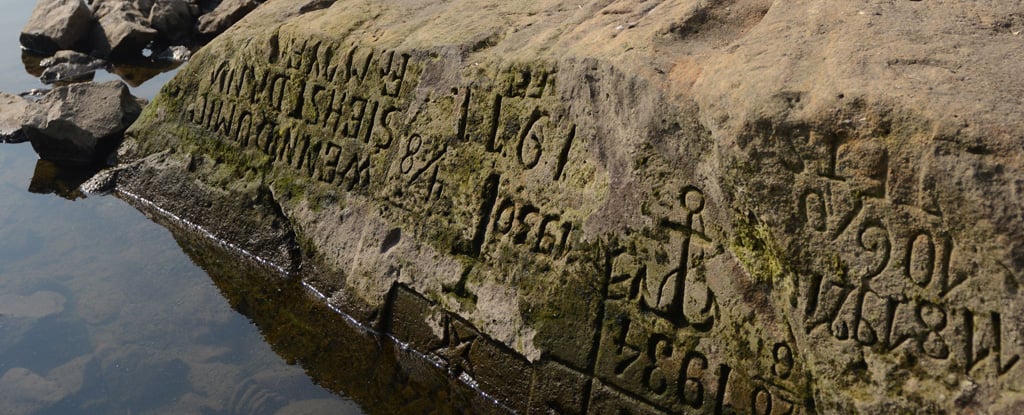The flooding of the Elbe and Rhine rivers in the Czech Republic and Germany has revealed some rocks engraved centuries ago during times of water stress. As Europe bakes this summer in record heat, droughts have caused water levels in rivers and lakes across the continent to plummet. Do you know what Hunger Stones are?
There are hunger stones or “hungerstein” in Central Europe, stones in riverbeds marked with an inscription visible only when the flow was low enough to warn of a drought that would cause famine.
Hello Hunger Stones, Welcome Climate Change
These relics of the past are not promising. Droughts in Europe this summer and a drop in river levels have revealed some strange stones previously submerged and on which very ominous messages are engraved. They provide an eerie echo of the current deterioration of the climate crisis.
The footage below was shot by the British news agency Reuters in the summer of 2022. It depicts “hunger stones” that reappeared along the Rhine river in Germany during August due to drought. The stones had already resurfaced in 2018, a year with similar weather patterns. The news agency explained that they serve as a warning for famine, hence the name given to them by the scientific community.
While some rocks were discovered on the banks of the Rhine, the French Moselle, and the German Weser, most were discovered on the banks of the Elbe. This major European river flows from the Czech Republic through Germany and into the North Sea. According to Paris Match, 25 such stones have been discovered in Europe, visible only when the water level is low. (Source: The Guardian)
If You See Me Cry?
If you see me, cry! says a stone on the banks of the Elbe river in Decin, Czech Republic, that resurfaced four years ago, according to photos posted on Twitter by Dutch RTL Nieuws correspondent Olaf Koens. The ominous inscription, engraved in 1616, still serves as a water-level marker and is most likely used at the time to warn future generations of impending trouble.
Czech researchers discovered numerous dates carved on the surface of the same rock in 2013: 1417, 1616, 1707, 1746, 1790, 1800, 1811, 1830, 1842, 1868, 1892, and 1893. The studies represent the years when drought caused poor harvests and famine on the Elbe’s banks. A “hunger stone” on the river’s right bank in Tuchlovice, a small municipality in the Czech Republic, reads, We cried, we cry, and you will cry. (Source: The Guardian)
Decin’s engraved stone has become a local tourist attraction because it is visible “126 days a year, thanks to the construction of a dam built on an Elbe tributary in 1926,” according to the American science website Ars Technica. The website also stated that the majority of the images shared on Twitter were not taken in the summer of 2022 but in 2018, a year already marked by an exceptional drought, which had sparked renewed media interest in the story of the hunger stones.(Source:Lemonde)
Image from Science Alert
